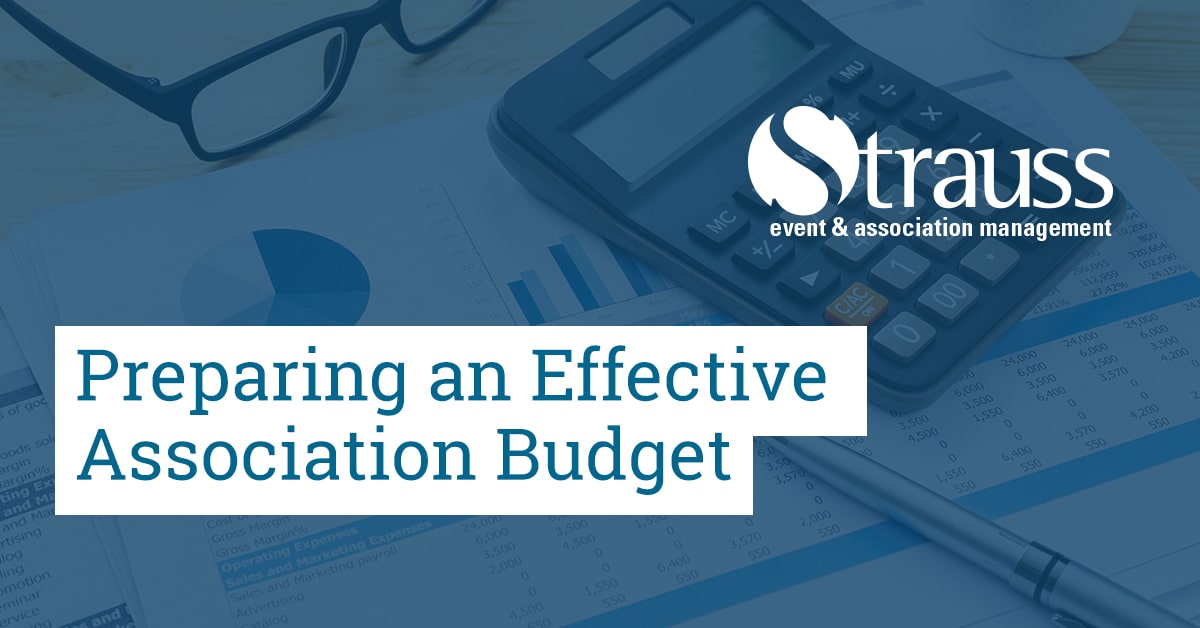It’s no secret that budgeting is a vital part of running a successful association. Often it can seem like an overwhelming task, but it doesn’t need to be complicated. With effective budgeting, you will be able to ensure your association is set up for long term viability by focusing on the primary goals and objectives of the association. Here a number of key steps associations should follow to ensure that budgets are as realistic and as useful as possible.
What is a Budget
A budget is an estimation of revenue and expenses over a specified future period of time. Budgets are usually compiled and re-evaluated on a periodic basis to ensure that it remains accurate and viable. A budget is used to enhance and envision the success and future of any association since it is essentially a plan for how decisions will be made in the upcoming period.
For more information on budgeting from the perspective of the Association management/Board of Directors, see my colleague’s previous article.
Where to Start
The budgeting process begins by establishing assumptions about the upcoming period; don’t forget to be realistic! The first step in making a successful budget is setting aside the necessary time to make a successful budget. The process requires thought, but also it requires multiple perspectives from different employees or board members. Keep in mind that it will evolve, and change based on the number of times it is analyzed. Don’t rush the process and don’t be afraid to ask questions.
Begin by asking questions such as, “What is the projected revenue?”, “What are the fixed costs? e.g. rent, taxes, utilities, management fees, salaries”. And finally, “What are the variable costs and what can we do to control them or predict them this year?”
A useful starting point is last year’s figures, but it’s important to remember these should only be used as a guide. There will inevitably be some changes to revenue and expenses from year to year. A great starting point is to create a list of items that you know will be different from the prior year. It also helps to go through the revenue and expenses line by line when doing this. Examples of expected or possible variances could be:
- Will there be any changes to the operations of the association?
- Do you have any contracts in place for the coming year?
- Is marketing the association more of a priority in the future than in prior years?
- Have there been any reason legal fees may increase?
When budgeting, it’s also a good idea to remain conservative. It’s much better to be surprised by a higher profit than disappointed by a larger loss.
Review Regularly
To make sure budgets are effective, you will need to review them regularly and revise where needed. Although an association usually has a budget prepared prior to the start of the fiscal year that is approved by the board, this does not mean that you cannot adjust items as needed in a separate projection for the year as it progresses. A change to the actual budget would need to be reviewed and approved by the Board.
It’s a good idea to include multiple staff in the budgeting process since colleagues will likely have different perspectives, ideas and knowledge. Consider the opinion of all team members involved in association planning. This includes event planners and membership coordinators. Gathering input from others will allow you to balance the estimates and achieve a more realistic budget. This involvement will also motivate the entire team to strive to meet budgeted commitments.
Benefits of Budgeting
There are a number of benefits of having a well-crafted association budget, including the following:
- Manage cash flow
- Increase staff motivation
- Allocate appropriate resources to specific projects
- Monitor association performance
- Meet the association’s objectives
- Improve management and Board level decision-making
- Identify problems in advance of a crisis
- Plan for the future
Budgets should be a major part of every association’s annual planning. This plan should allow the flexibility needed to achieve goals with order and success. Documentation of ongoing budget assumptions and changes will provide a basis for improving the efficiency of the budgeting process each year.
For more information on budgeting for association events, see another colleague’s article.

